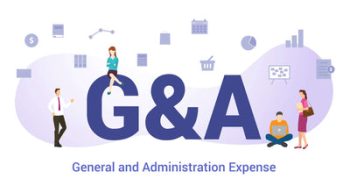- Leverage the Benefits of Scenario-Based Planning – Act Now!
- Maximize Your Lead Pipeline: How to Identify and Score Sales Qualified Leads (SQLs)
- Everything You Need to Know About National Insurance and its Benefits – Apply Now!
- Get the Best Value for Money – Learn How to Calculate Unit Value with These Tips
- Bank Financing: A Guide to Raising Funds
Your guide to general and administrative expenses
When you open a financial statement and take a look at profit and loss (P&L), you may come across a line item in operating expenses: G&A or general and administrative expenses. You may have wondered, what are these?
Essentially, general and administrative expenses are true to their name – expenses that are incurred that are not specifically related to generating revenue, such as cogs, or contributing to the creation and/or improvement of a product or sale, such as research and development (R&D) and/or marketing expenses.
However, not all random expenses can be classified as G&A. So let’s dive in.
What are G&A expenses?
Examples of G&A expenses
The Importance of G&A Spending
Minimize G&A expenses
What are G&A expenses?
General and administrative expenses are costs that a business incurs by virtue of ending its operations, not necessarily associated with a specific function, team or department. These are normally fixed costs that often go unaddressed – rent, utilities, insurance, office supplies to name a few (we’ll explain in the next section).
Something interesting is that many companies are trying to shave their G&A expenses, as these are costs that don’t directly influence big ticket items such as revenue.
However, these are usually fixed costs, and as the business grows these will also increase proportionally by necessity – concerns such as office space, office equipment, salaries and administrative supplies all become more necessary as the business grows.
Depending on the accountant and financial statement, G&A expense can either be its own line item, usually below the cost of goods sold (COGS), or a breakdown item by item, in fees, interest, etc.
Examples of G&A expenses
- Rental costs (rent) for offices (usually the largest);
- Assurance;
- Buildings / utilities (Internet, electricity, etc.);
- Electronic supplies for employees (computers, laptop, cables, etc.);
- Office furniture and equipment (these also depreciate, so depreciation is included);
- Administrative staff salaries (for teams and staff not directly related to sales, revenue generation or production functions: such as administrative/support staff; internal/external legal counsel; finance; accounting; and information technology support);
- Outpatient consultation fees;
- Software, tools and services subscriptions (such as Microsoft Office);
- Employee “perks” such as snacks, free coffee, and recreation budget;
- Office supplies including stationaries, hardware, staplers, hole punches, etc.
The Importance of G&A Spending
These may not come at the forefront of essential costs, but make no mistake – G&A expenses are vital and very necessary to keep your business running smoothly, uneventfully and professionally.
Items such as rent, overhead, and supplies all contribute to the day-to-day operations of your business. Additionally, consulting with a tax advisor can shed light on expenses that may be tax deductible, depending on need and use.
Minimize G&A expenses
It is the nature of business that expenses seem to be reduced on a regular basis, either to increase margins as much as possible or for the sake of efficiency. And usually, G&A expenses are the first to be taken into account for reasons mentioned above; However, it ultimately comes down to how you, the founder, owner and leader, want to run your business.
A very relevant example is the largest element of G&A: Office Space. Starting in 2020 and throughout the Covid-19 pandemic, hundreds, if not thousands, of companies have completely shifted their employees to working from home and remotely. This significantly affected G&A costs on their income statements, either reducing or eliminating rent costs altogether; However, many offices chose not to abandon their leases entirely because they believed in the ongoing experiment. At First Hybrid, but many now call their workers 100% in the office.
It is more important to understand the most important cost drivers for G&A, as this will allow you to make strategic decisions on how to reduce. For example, if paper and ink become incredibly expensive, this can catalyze the push to go paperless.
Finally, on the subject of employee perks such as snacks and food, coffee and even merchandise and subsidized outings and recreational incentives, affect company and employee morale. Ironically, cutting costs can result in higher costs, and it’s highly advisable to consider the potential implications before cutting them out of expenses.
[right_ad_blog]

